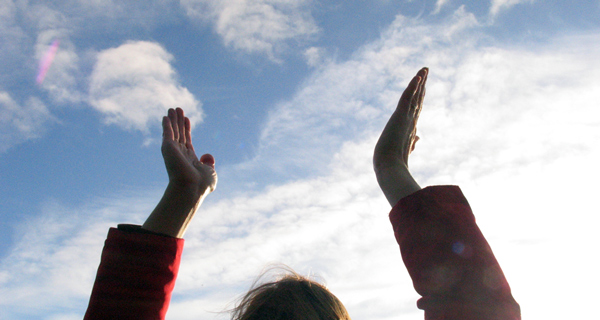Control your location
This starts right at the beginning when you are planning your shoot. You need to think about what a location sounds like even though you might already know it looks right. A directional mic will help you record better audio, but it will not get rid of unwanted sounds altogether.
The quieter your surroundings are, the easier it will be to record the sound you want as clearly as possible. Even if you have no choice about where you're going to film, make a checklist.
Checklist
- Recce the location
- Stand & listen
- Outside noise
- Inside noise
- Acoustics
- Note problems
- Check Timetables
- Give Advance Notice
Recce the location
Take time to visit where you plan to film, if possible take main crew members with you. It helps everyone to consider the location in advance.
Interior - stand & listen
In the chosen room, make sure you can shut all the doors. Are there any obviously disturbing noises which you can prevent when filming? - In any normal location there will always be background noise, you are just trying to reduce the most intrusive, eg: builders outside, floor cleaners, loud TV or music somewhere.
In the room, what can you switch off? Air conditioning, computers, drinks machines, phones etc. Anything you can do without, make a note to get it switched off on the day.
Still listening...
Interior - acoustics
Big hall vs. Comfy room
Clap your hands or speak loudly. Do you notice an echo? The more echo (or reverberation time) a room has, the worse your sound will be. Just think what a swimming pool sounds like - all those reflective surfaces bounce the sound around so words overlap and become indistinct.
So avoid large box-shaped rooms with hard, bare walls. Look for somewhere with an irregular shape, curtains, carpets, soft furnishings. This all breaks up and absorbs the echoes.
If you must use an echoey space, try to soften the environment by dressing it with soft things.
Check timetables
Your room may be quiet now, but are there times when it may be noisy? Is that when you'll be filming? You can wait a few minutes for a busy corridor to go quiet between periods but what if it's the kitchen staff preparing lunch? Ask around.
Give advance notice
Put up a notice of the dates and times you intend to film in the room. Ask people if they were planning to do something noisy at that time. This also helps to inform people and they may be more understanding when you are asking them to be quiet on the day!
Exterior - stand & listen
Could you be further away from a busy road or noisy playground? Look for clues: Does a pedestrian crossing 'beep' every few minutes? Is there a busy train line hidden behind something? What's it like at rush hour? Will that matter? Should you consider a park or a quieter side-street?
Your video may be about noisy roads, or suit being in a shopping precinct. This makes these background sounds acceptable but, depending on your microphones and how you shoot it, you may not pick up people speaking over the noise.
Appoint a floor assistant
If you have spare crew members, appoint someone as floor assistant. This job can easily be rotated or shared. It's their job to police the outside of your location, call for quiet and politely ask passers-by to keep their voices down. If a noise starts which is causing a problem, they can investigate and either stop it or hold it for a moment.
Give them the list from your recce of everything that needs to be switched off. Outdoors, floor assistants can also help to stop passers-by walking through your shot or staring into the camera.
Make sure you set up good communication with the Floor Assistant so they know when you stop and start recording
Ready to go for a take ?
So the whole team are ready to film - but 'lights camera action!' isn't enough any more. Find out how to get the whole crew focused the way the industry does.
A fun Into Film short about sound recording.
